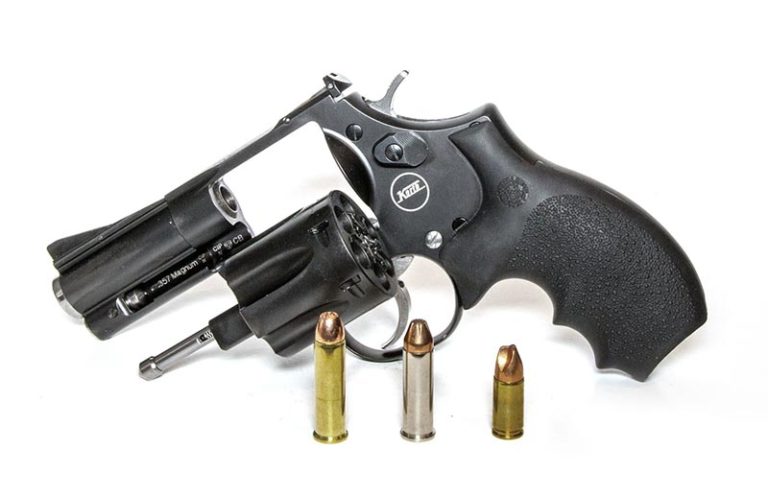
For those who only trust their lives to the best, here’s a closer look at the 2.75-inch Korth Carry Special.
I was raised on revolvers. As a habit from his moonshining days, Grandpa kept a Smith & Wesson Model 10 close by most of the time; it was the first handgun I ever fired. My cousin either had a Ruger Single Six or Colt Frontier with us on all our adventures. We used them to shoot pop cans and to kill rats and snakes.
Of course, I found autoloaders soon enough, and my hands found a 1911 or a Browning Hi Power more to their liking. Still, when I became a police officer, I was issued a Smith & Wesson Model 686. I used it at the Academy to take top gun, while the rest of my class was shooting Glocks. However, in all my years of handgunning, I’ve never seen a revolver like the Korth Carry Special.
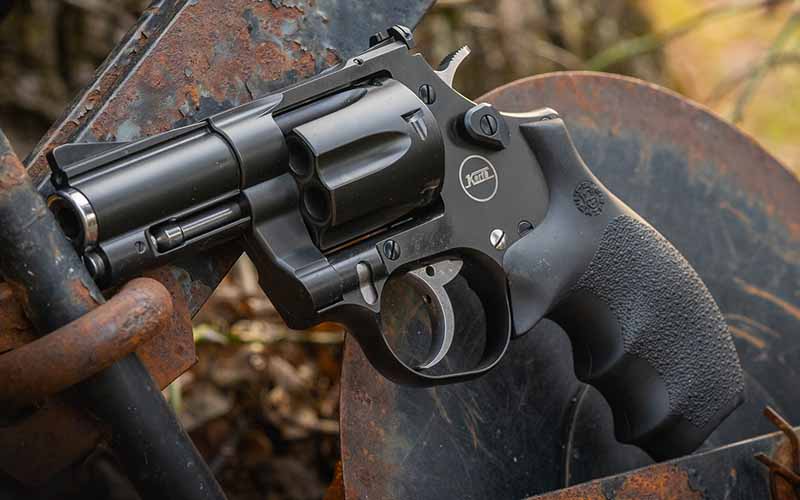
The Korth Story
The Korth revolver is made in Lollar, Hesse, Germany. The company was founded in 1954 by former railroad engineer Willi Korth, who had a singular goal: to produce the finest revolver in the world.
Every part of a Korth revolver is machined from billet steel, and they’re fitted with a cold-hammer-forged barrel. The machine work is exquisite; you’ll find no milling marks. The fit is superb; tolerances are held to a minimum, and the cylinder locks up like a bank vault.
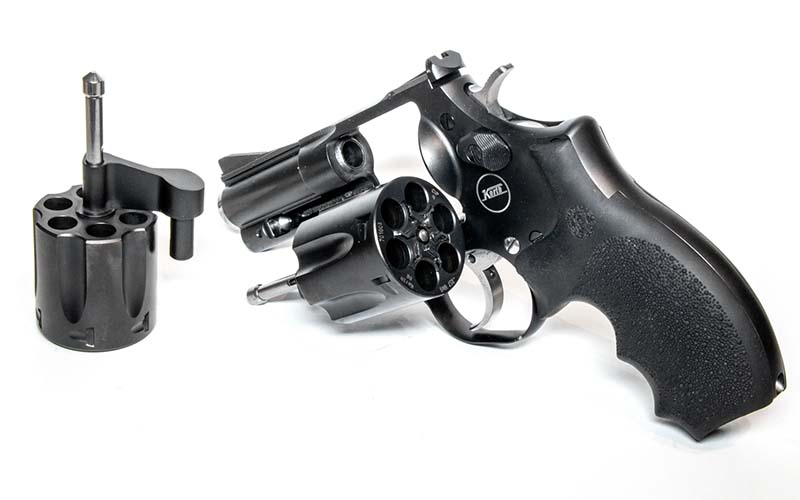
The trigger feels unlike any trigger you’ve every pulled on any gun. Yes, it’s a double-action trigger, but as the trigger progresses through its movement, it sort of feels like you’re dragging your finger through pudding. And in the single-action mode, the trigger is so good it’s like all you need to do is think when you want the gun to go bang.
There are some design elements that are a bit different from conventional revolvers you might be familiar with. The 416R stainless-steel barrel is shrouded with a steel jacket that also forms the extractor-rod shroud. The cylinder gap is so minimal you’ll struggle to slide a piece of paper between it and the barrel. And though the cylinder release is in the usual spot, you push it forward with your thumb as opposed to pulling it to the rear. The revolver isn’t blued; it’s expertly finished in DLC (diamond-like carbon coating), which gives it a business-like appearance.
When I first picked up a Korth, I thought, If Batman carried a revolver, this is the one.
However, what might be the most unique feature of the Korth is how easy is it to change from a .38 Special/.357 Magnum cylinder to a 9mm Luger cylinder. You can switch these cylinders in about 10 seconds without the aid of any tools. Simply open the cylinder and press a button on the right side of the revolver’s frame. This allows the cylinder and crane to slide out. Once one cylinder is removed, you just reverse the process and install the other. With the Korth, you have one revolver that’ll fire three different cartridges.
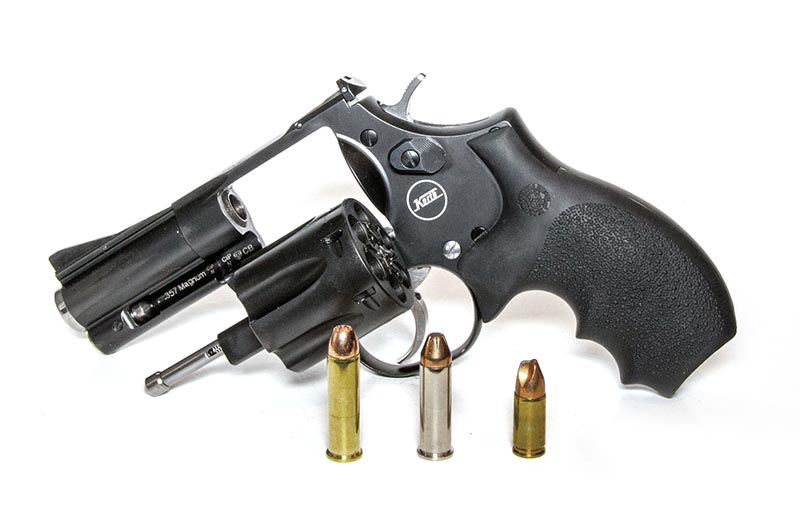
Korth revolvers are imported into America by Nighthawk Custom out of Berryville, Arkansas. I was first exposed to them during Gunsite Academy’s 40th Anniversary Alumni Shoot, where I helped Nighthawk run one of the shooting stages. The stage required competitors to step up to a table, and on the go signal they had to pick up a Korth revolver and engage some targets.
It was kind of thrilling to watch each shooter’s expression after they fired their six shots. Almost every competitor would turn and remark how amazing the Korth’s trigger was. That was in 2016, and Nighthawk has been importing these amazing German-made revolvers ever since.
Currently, Nighthawk Custom offers 10 models, with prices ranging from $3,699 to $8,999. The new Carry Special is the least expensive version offered.
The Carry Special
The Korth Carry Special is a short-barreled revolver, intended as the name suggests, for personal protection. It has a 2.75-inch barrel and weighs 33.6 ounces. It comes with a .38 Special/.357 Magnum cylinder and a clipless 9mm Luger cylinder—full moon clips aren’t required. It’s also fitted with a slimmed down and contoured rubber Hogue grip.
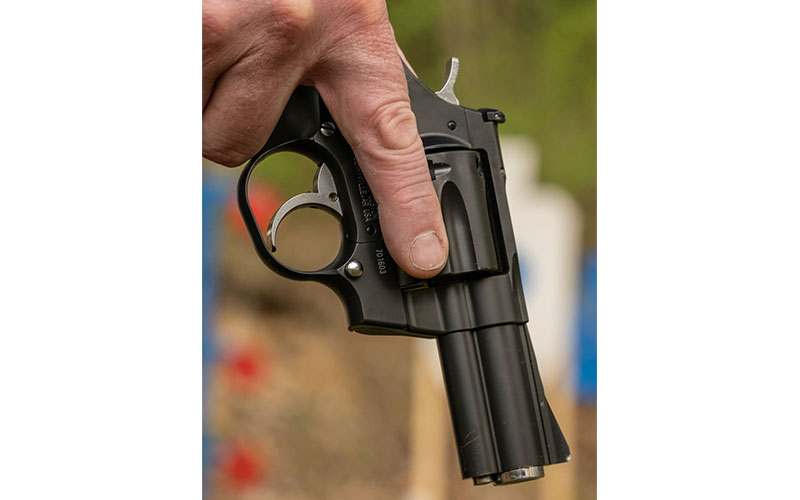
The rear sight is shaped more like a rear sight you’d find on a semi-automatic self-defense handgun, but it’s fully adjustable. The front sight is supposed to be a square black blade with a gold bead that’s pinned to a rib that’s integral to the barrel shroud, but more on that later.
One concern with any imported firearm, especially a revolver, is holster availability and compatibility with speed loaders. Though you can for sure find holsters for Korth handguns, or you can have a guy like Rob Leahy at Simply Rugged make you a custom holster.
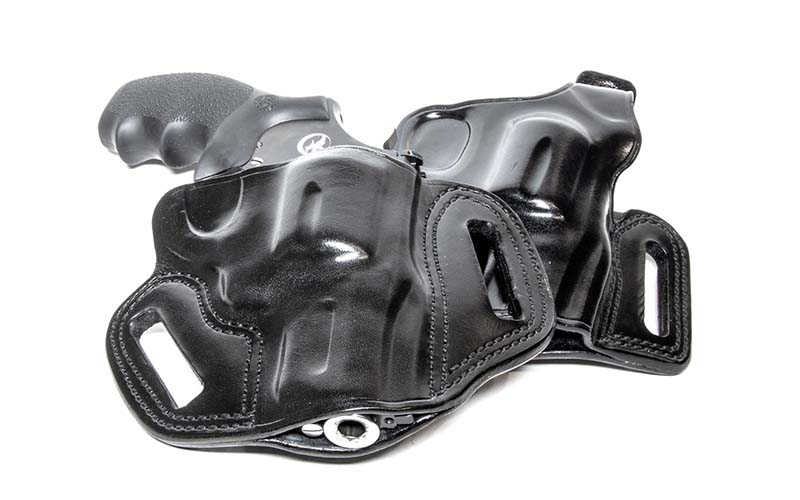
I found that the 2.75-inch Korth Carry Special worked well enough from a Galco Combat Master (Model #CM102B) designed for a 2.5-inch Smith & Wesson 686. If you prefer a thumb snap, the Korth also fits the Galco Silhouette High Ride (Model #SIL104B). As for speed loaders, Korth manufactures their own for the .38 Special/.357 Magnum and 9mm Luger. They, too, are available from Nighthawk Custom ($50).
Range Time
Though I don’t get wrapped around the axle when it comes to testing a defensive handgun from the bench, when you’re dealing with a handgun that costs this much, you want to know what it’ll do. The three-cartridge uniqueness of the Korth Carry Special necessitated the shooting of three different loads: one in 9mm, one in .38 Special and one in .357 Magnum. Obviously, the gun is hindered a bit by its short barrel, but after firing three, five-shot groups with each load from a sandbag rest at 10 yards, the average for all nine groups was only 1.64 inches.
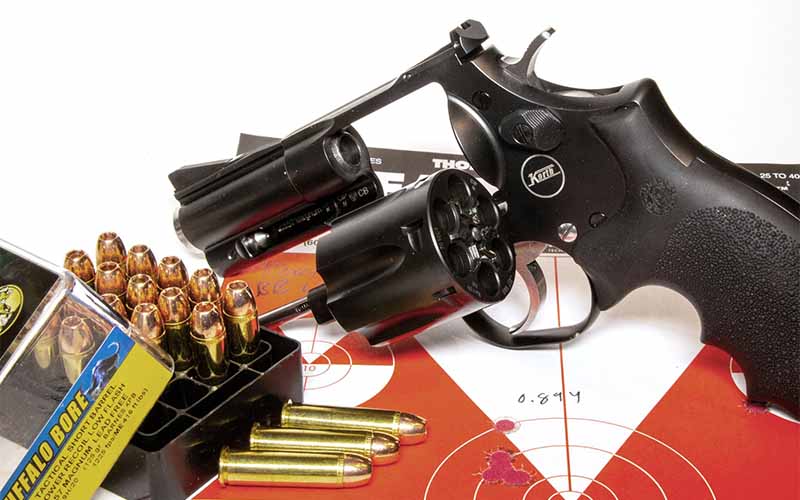
How does that stack up against other common defensive handguns? Well, based on the defensive handguns I’ve tested, that’s better than average for that barrel length. As a comparison, I tested a 3-inch Colt Python with the same .38 Special and .357 Magnum loads, and it averaged 1.75 inches. It’s also more than sufficient for self-defense and should allow you to deliver a shot inside a 4-inch circle out to around 12 or 13 yards—and that’s if you shoot twice as bad off-hand and under stress as you do from a bench rest.
What I think is more important is how well a handgun allows you to perform practical defensive drills. After all, during an encounter where you must shoot to save your life, you’ll not have a bench rest and sandbags. I typically find my best performance on tactical drills with my Wilson Combat EDC X9. I ran both against the Korth Carry Special on three drills fired at distances of 5 and 10 yards. Using the same 9mm ammunition, on average I scored 10 percent better with the semi-auto.
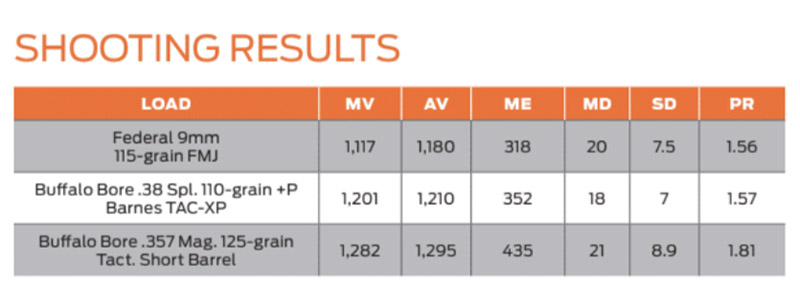
I also had two other shooters run the same drills with both pistols, and the results were similar. On average, they performed 12 percent better with the Wilson Combat pistol. One obvious reason is that single-action semi-auto pistols can be fired faster than double-action revolvers. The other reason was that the plain black sight on the Korth Carry Special slowed down engagement times on the 10-yard drill. The low-profile matte black sight was just slower to pick up.
Wait a minute. What sight am I talking about? Yeah, good question. As previously mentioned, the Carry Special comes with a bladed front sight that has a gold bead. However, the revolver I was provided for evaluation was one of the early imports, and it was fitted with a plain black, ramped front sight. It worked just fine during accuracy testing, but during fast-paced drills at 10 yards, it was very hard to quickly pick up that plain black sight on the target.
On the other hand, on a three-shot speed drill fired at 5 yards, where we had to make two torso hits and then hit a swinging head plate as fast as possible, there was only a 5 percent difference in scores. The thing is, at this distance, we were just indexing the gun and not using the sights. On that drill where the sights weren’t that important, the only real difference in performance—speed—was working with the double-action revolver trigger as opposed to the single-action trigger on the Wilson Combat semi-automatic.
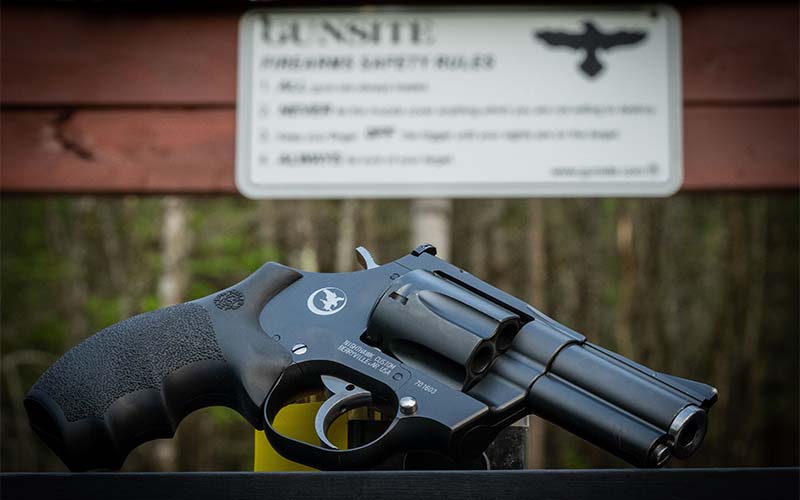
Is It Worth The Money?
Well, $3,699 is a lot of money to pay for a handgun—any handgun. However, if you look at the prices of high-end 1911 handguns, there’s not a lot of difference. Most of the custom 1911s sold by Nighthawk retail for more than $4,000. Also, when you compare the Korth Carry Special to other revolvers from Colt or Smith & Wesson, their actions aren’t as smooth, and the triggers aren’t even in the same league. A 3-inch Colt Python will set you back $1,500 … and a comparable 3-inch Smith & Wesson will run you between $900 and $1,300. Is the Korth Carry Special worth more than twice these other revolvers?
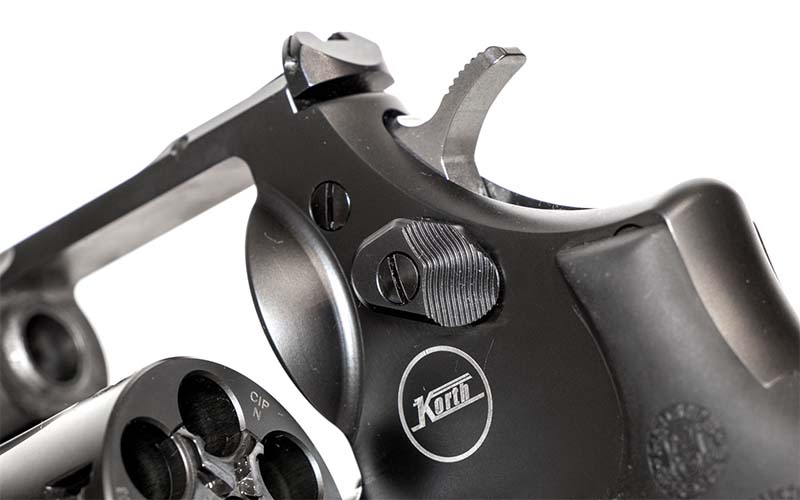
From a save-your-life standpoint, probably not. But the same could be said for most full-custom 1911s. On the other hand, guns aren’t just about self-defense; if they were, everyone would probably just carry a damned old Glock. No, sometimes shooters, just as those who enjoy other sporting endeavors, want the best their money can buy. If that’s you, and if you want what’s arguably the best self-defense revolver available, and if you have $3,699 plus tax lying around, now you know where to spend it.
Nobody needs a Korth revolver. But, then again, nobody needs an $1,800 Honma golf club, a $1,500 Seigler fly reel or a BMW M8 either. If you can afford the BMW, you can damned sure afford the Korth. And, if you show up at the shooting range with both, you’ll be well armed and most likely the coolest guy there, maybe for a long time to come.
I’m not sure how long the BMW will last you, but the Korth comes with a lifetime warranty.
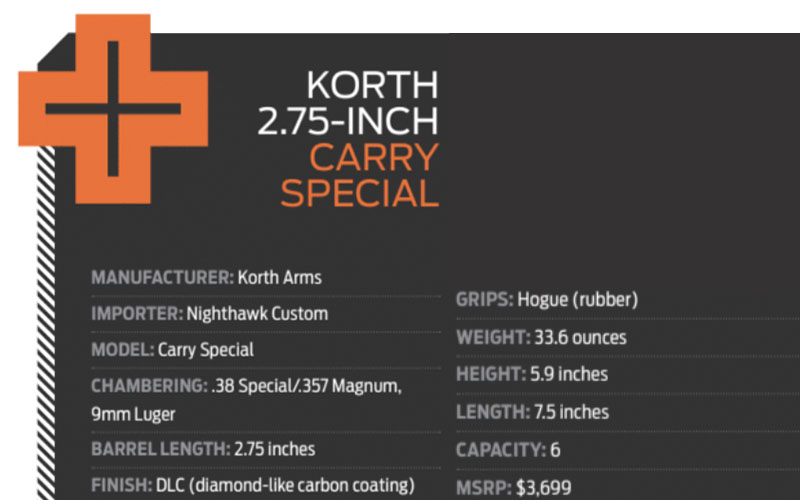
Editor's Note: This article originally appeared in the August 2022 issue of Gun Digest the Magazine.
More On Defensive Revolvers:
- .357 Magnum Revolver: Controllable Concealed Carry Options
- 9 Best Concealed Carry Revolvers For Personal Defense
- Fighting Revolver Project: Smith & Wesson Model 586
- Rolling With A .45 ACP Revolver
- .410 Revolvers: Are They Really Good For Nothin’?
- Best 9mm Revolver: 5 Options For Everyday Carry

Next Step: Get your FREE Printable Target Pack
Enhance your shooting precision with our 62 MOA Targets, perfect for rifles and handguns. Crafted in collaboration with Storm Tactical for accuracy and versatility.
Subscribe to the Gun Digest email newsletter and get your downloadable target pack sent straight to your inbox. Stay updated with the latest firearms info in the industry.

![Best Concealed Carry Guns In 2025 [Field Tested] Wilson Combat EDC X9S 1](https://gundigest.com/wp-content/uploads/Wilson-Combat-EDC-X9S-1-324x160.jpg)


![Best 9mm Carbine: Affordable PCCs [Tested] Ruger Carbine Shooting](https://gundigest.com/wp-content/uploads/Ruger-Carbine-Shooting-100x70.jpg)
![Best AR-15: Top Options Available Today [Field Tested] Harrington and Richardson PSA XM177E2 feature](https://gundigest.com/wp-content/uploads/Harrington-and-Richardson-PSA-XM177E2-feature-100x70.jpg)

$3,699 is for the gun with the .357/.38 cylinder. The 9mm cylinder costs another $1,999.
It isn’t expensive because of the quality, although I am sure the quality is great. It is expensive because Germans work about 30 hours per week, make about 100k/year and get paid vacations each summer for about a month. Plus, their government doesn’t need much in the way of taxes for defense, because Americans will defend them.
It comes down to, what are you paying for? Time? Expertise? Workmanship? Yes, for about half the price. The other half is to pay for all the other crap above.
I also have to wonder how that $1500 Python would feel/shoot after a first class custom action job by a well respected shop. No way it would add up to $4000. The Korth is excellent but ridiculously priced, pretty much like a Rolex. Conspicuous consumption. A “look at what I’ve got” piece.
No one in their right mind would carry a revolver worth almost $4,000 dollars. In a shooting it would be confiscated by the police and probably never returned and years later if one sued and got the Korth back it would be beat up and rusted up devaluing it by hundreds if not thousands of dollars.
In today’s world not many people want to carry a revolver of limited capacity and deadly slow to reload when it goes empty in a gun battle